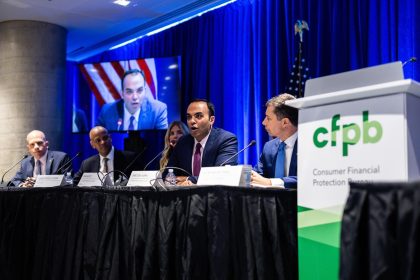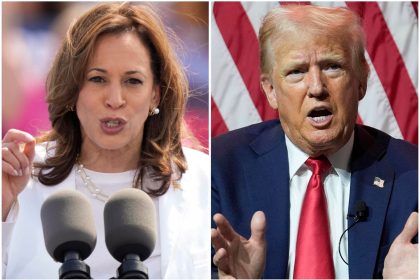Small regional banks dominate the top of Forbes’ annual list even after last year’s turmoil, while JPMorgan is the lone trillion-dollar institution in the top 100.
By Hank Tucker and Andrea Murphy, Forbes Staff
The failures of Silicon Valley Bank and peers like First Republic Bank made 2023 the most tumultuous year for the banking industry since the 2008 crisis, but for some small community banks, the chaos hardly registered.
City Holding Co., the parent company of West Virginia’s City National Bank with $6.2 billion in assets, is based in the capital city of Charleston, in a region of Appalachia known for coal. West Virginia is a state whose population of 1.8 million is on the decline, but president and CEO Skip Hageboeck sees that as an asset instead of a drawback. Major banks don’t reinvest much in West Virginia and surrounding towns in Virginia, Ohio and Kentucky to compete for customers, and City National has steadily increased its market share. Thanks to its focus primarily on retail banking rather than catering to businesses, just $894 million out of $5.1 billion (17.5%) in deposits are uninsured, according to its most recent call report, compared with 41% of total deposits at all U.S. banks.
“We have among the lowest uninsured deposits in the industry, so we didn’t have any issues at all,” says Hageboeck, a little more than a year after SVB’s collapse. “Our customers mostly didn’t ask and didn’t care.”
City National’s stock gained 18% in 2023, an anomaly among small banks, and its strong financial performance puts it in the top spot of Forbes’ 15th list of America’s Best Banks. To make the list, Forbes analyzed the 200 largest (by assets) publicly-traded U.S. banks and thrifts, and ranked the top 100 by 11 metrics measuring credit quality, profitability and, for the first time, 52-week stock performance.
City National ranked in the top 20 of five different categories, including return on average tangible common equity, return on average assets and Common Equity Tier 1 ratio, a critical measure of a bank’s liquidity that divides its core equity capital by total risk-weighted assets. For Hageboeck, who arrived to turn around City as its CFO in 2001 when it was struggling due to a floundering subprime lending business and became CEO in 2005, the secret has been a shift in strategy to commit to customers in its core markets.
“I started with a PhD in economics, which is a perfect way to prepare to run a bank,” says Hageboeck, who earned his bachelor’s degree from Butler University in two years and then his doctorate from Indiana University. “Being a commercial lender is not a very good way to prepare because it causes you to believe that growth is your objective, not profitability.”
Investors who may be lured to the stock should beware that they’re paying a premium for its stability. City Holding’s price to book ratio of 2.3 is far higher than the average price to book of 1.1 in the SPDR S&P Regional Banking ETF (KRE). City is also picky with its growth through acquisitions, though last March it closed an acquisition of Kentucky-based Citizens Commerce Bank for $62 million, adding $300 million in assets.
“They can win any M&A deal they want to with their valuation and pay higher than anybody, but they’re very disciplined,” says Catherine Mealor, a managing director at Keefe, Bruyette and Woods with a neutral rating on the stock. “They’re not going to overpay for an acquisition just because they’ve got a good currency.”
The rest of the banks in the top five on the list are California’s Westamerica Bancorp., Texas-based International Bancshares Corp., Wisconsin-based Bank First Corp. and Illinois’ HBT Financial. International Bancshares, the parent company of International Bank of Commerce which has 166 branches in Texas and Oklahoma, is the largest of the group, with $15 billion in assets.
While small banks dominate the top of the list, $3.7 trillion (assets) JPMorgan slots in at 26th, a significant jump from its 70th-place ranking last year. Its one-year share price gain of 48% was in the top 10 among all banks, and it was also among the best with a 17.7% risk-based capital ratio, which compares total capital to risk-weighted assets, and a 15% CET1 ratio. The other three trillion-dollar banks—Bank of America, Citigroup and Wells Fargo—all failed to crack the top 100.
“JPMorgan has never really tried to report huge earnings in any given year. Whether it’s a good year or bad year, they have a consistently strong reinvestment in the franchise,” says David Konrad, KBW’s managing director covering large banks. “Sometimes that holds back what would be an even stronger year, but as you do that over a decade, you have this groundwork where you can constantly put up those strong results.”
JPMorgan’s record $89 billion in net interest income in 2023 was up 34% from $66.7 billion in 2022, with interest rates stuck above 5% as the Federal Reserve continues to fight high inflation. The bank projects a roughly flat $90 billion in 2024, and Konrad says net interest income is likely nearing a peak for this cycle, but JPMorgan could make up for a pullback in that area if it sees an uptick in investment banking earnings, which have been stagnant for the last two years.
Another boon to JPMorgan’s balance sheet was its acquisition of First Republic Bank and its $92 billion in deposits for a $10.6 billion price tag in an FDIC auction last May. The acquisition was immediately accretive, as JPMorgan reported that $4.1 billion in net income was attributable to First Republic in the last three quarters of 2023. JPMorgan isn’t the only bank benefiting from shopping at last year’s fire sales. Raleigh, North Carolina-based First Citizens Bank scooped up Silicon Valley Bank last March, taking on $110 billion in assets, and its shareholders continued to be rewarded handsomely with a 186% one-year return through March 18 of this year, the best among all the banks included on the list. The acquisition also helped First Citizens post the best-in-class return on average tangible common equity, return on average assets and operating revenue growth, boosting it to 20th on the list from 87th last year despite a higher proportion of nonperforming assets than most peers—0.64%, compared with a median of 0.4% for all banks eligible for this list.
According to the FDIC, five banks failed in 2023 following back-to-back years of zero failures, and the $532 billion in failed assets were the most ever recorded in a single year. Given that there weren’t endemic asset quality problems, the industry appears to have emerged with a fairly clean bill of health. About 95% of FDIC-insured banks are profitable, and the industry’s $256.9 billion in net income in 2023 was down a mere 2.3% from the previous year. As for the largest banks, despite poor marks on financial metrics like net interest margin and net charge-offs that kept them off the list, Bank of America, Citigroup and Wells Fargo each returned more than 20% for shareholders in 2023.
“The biggest banks have had a really strong run from a flight to quality standpoint,” says Konrad. “They’re positioned very well, but you could argue that valuations are getting a little bit extended versus the regional banks.”
Click here for the full methodology and list of America’s Best Banks.
MORE FROM FORBES
Read the full article here

















